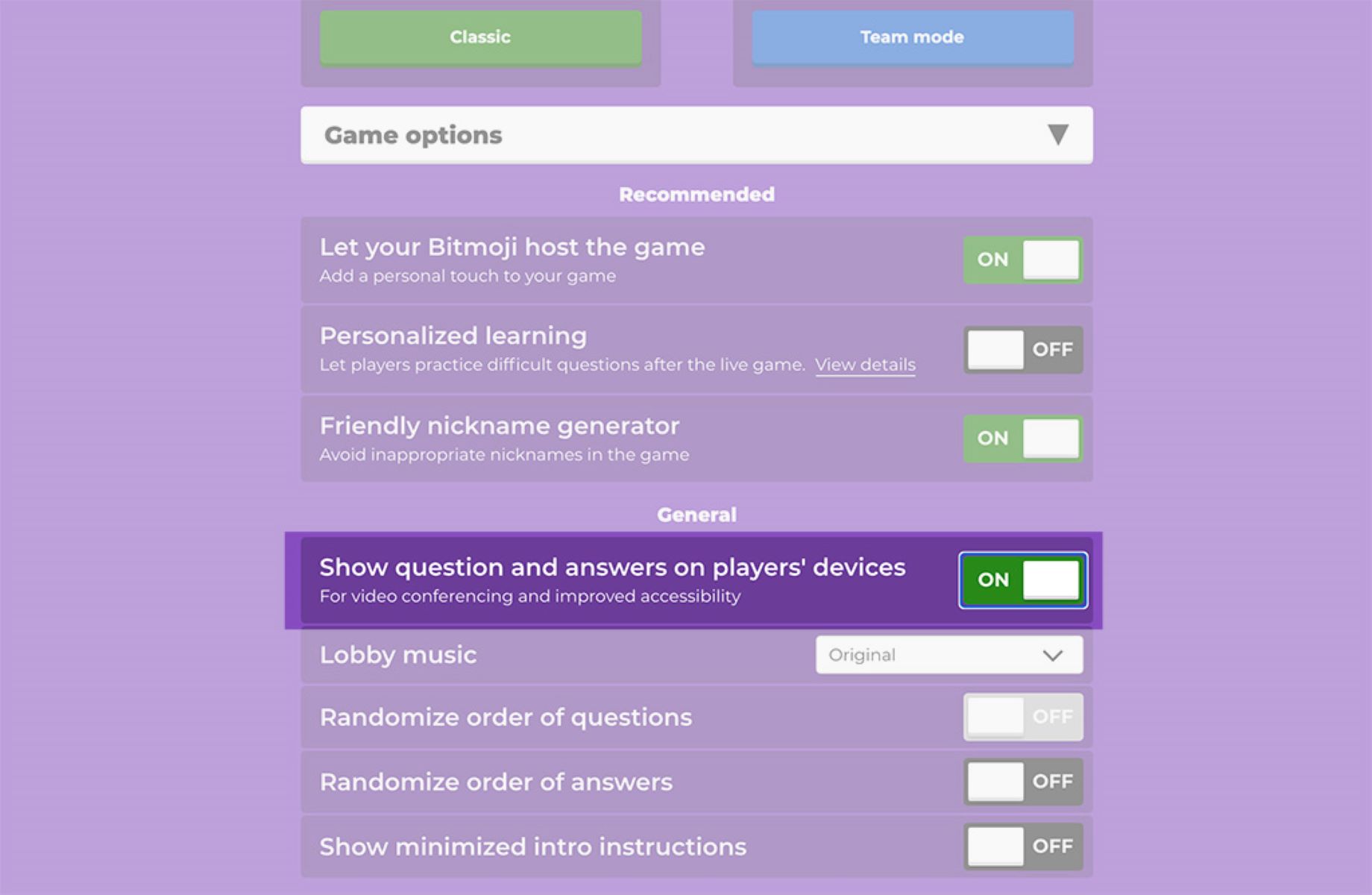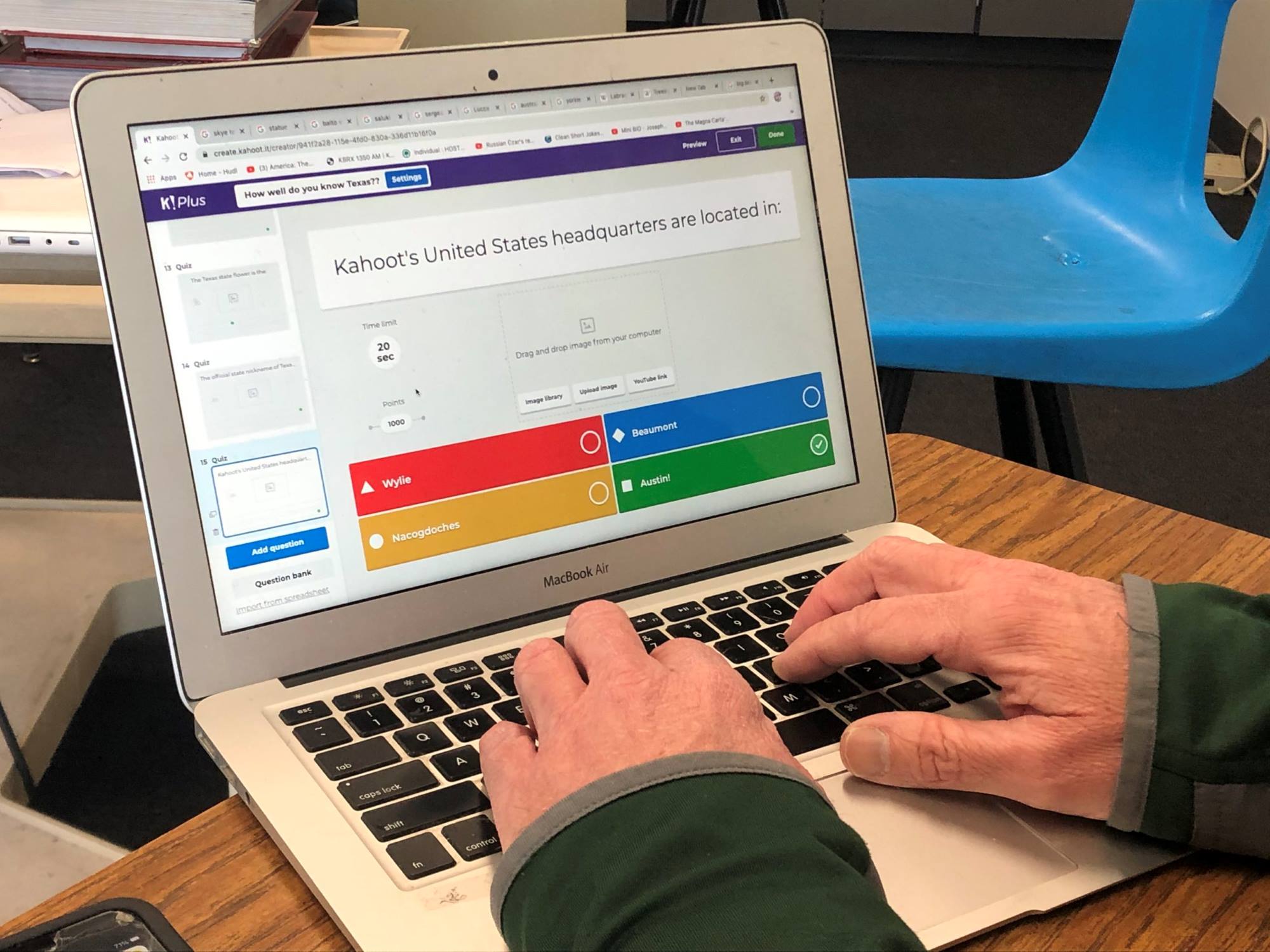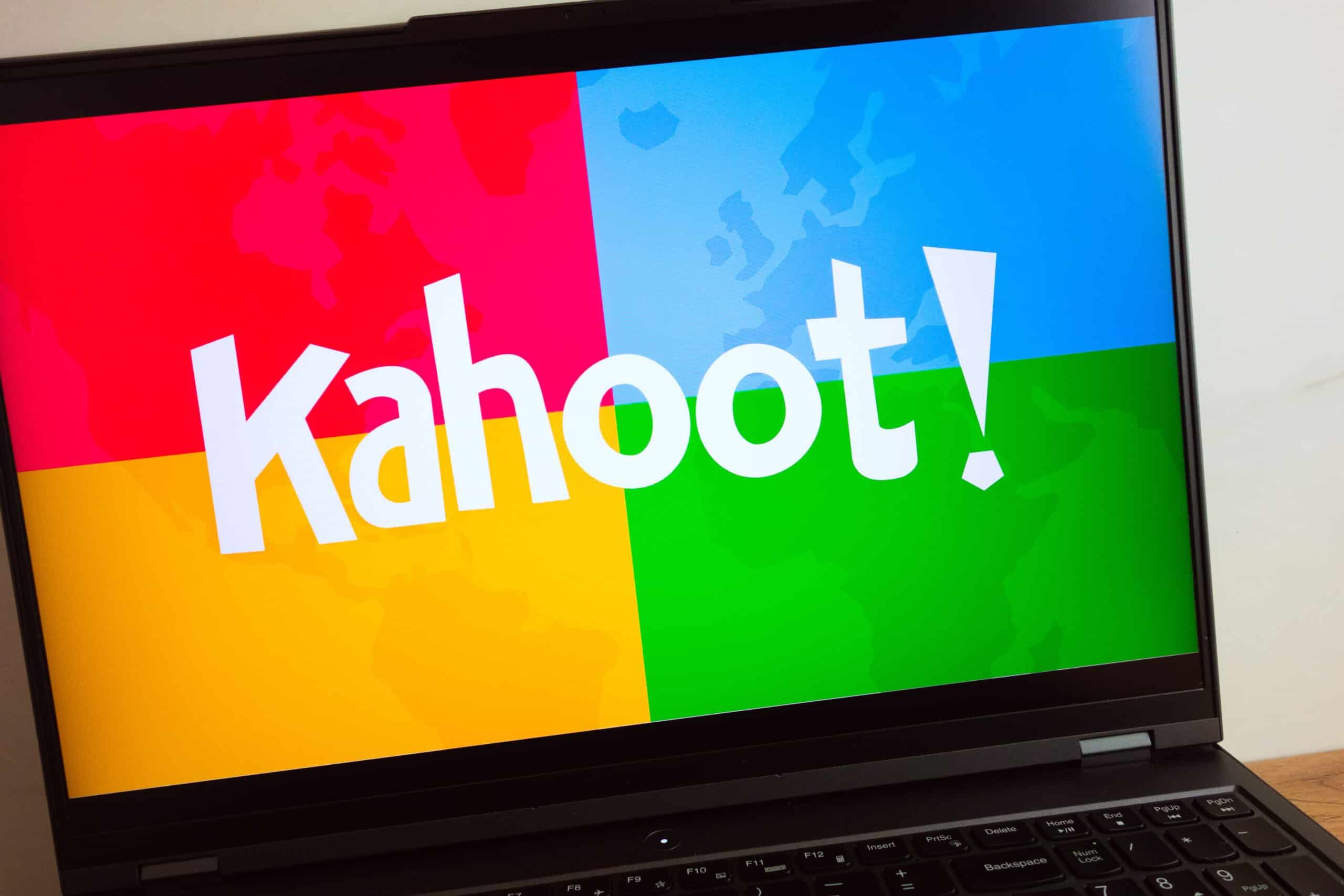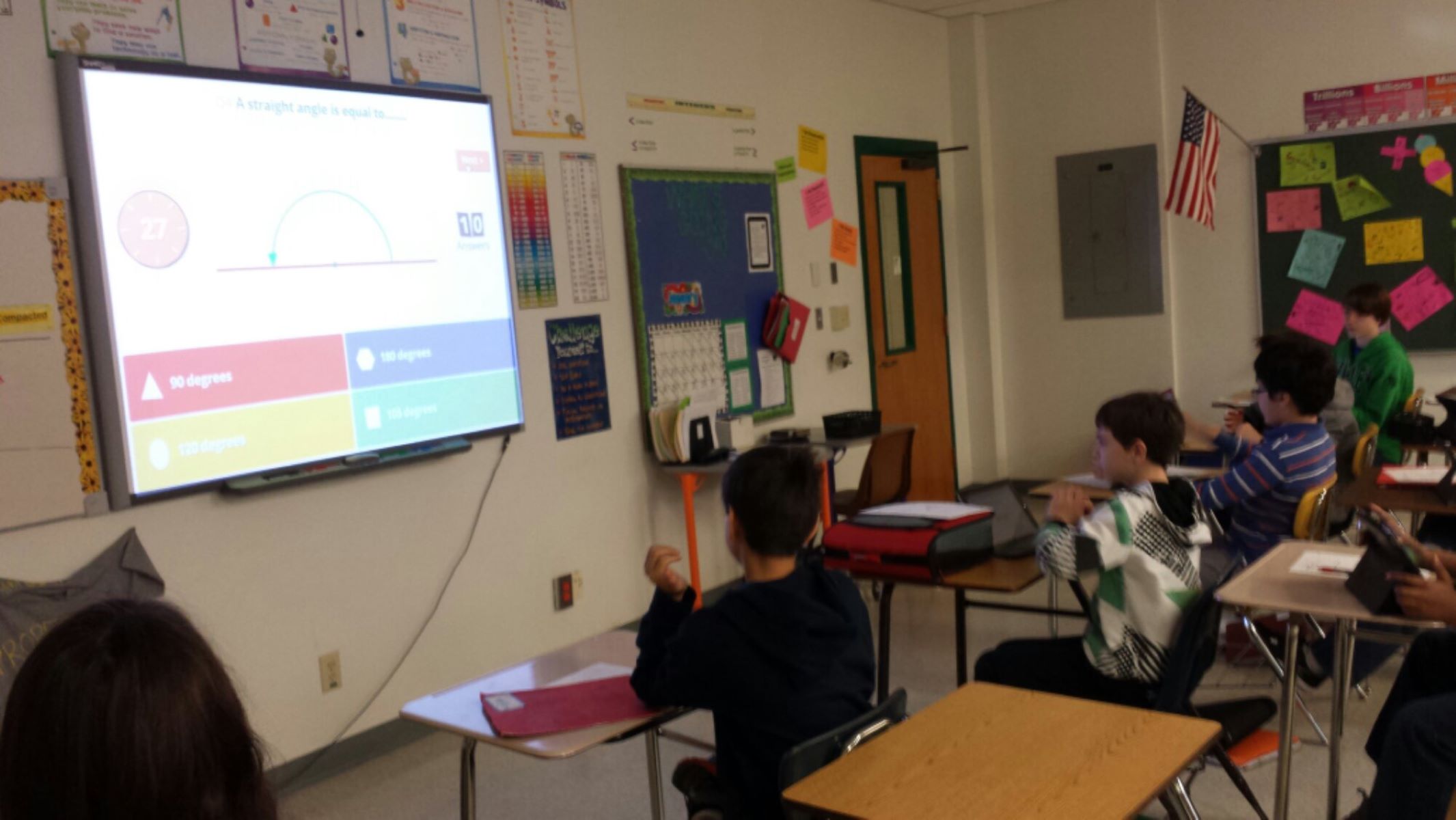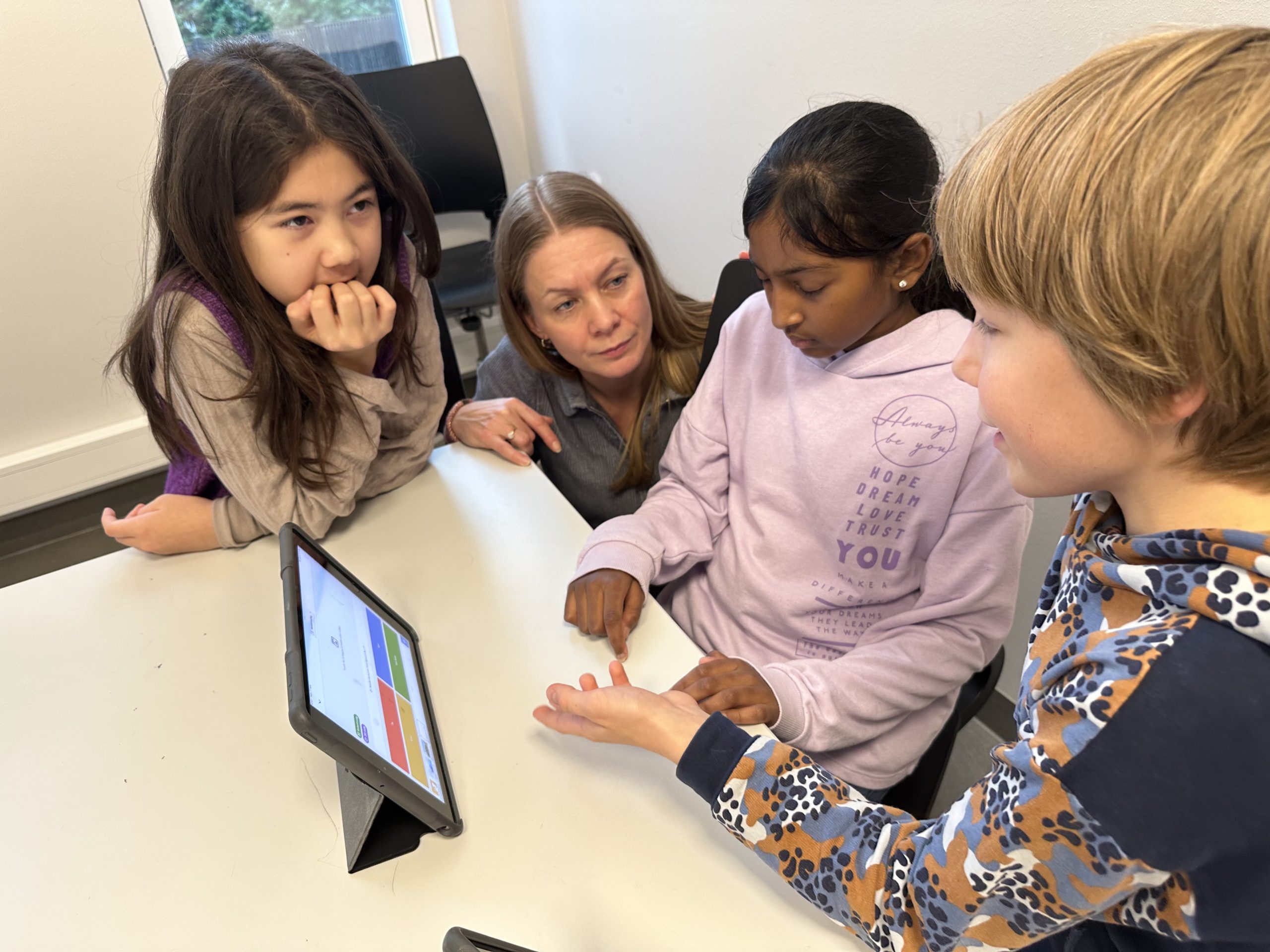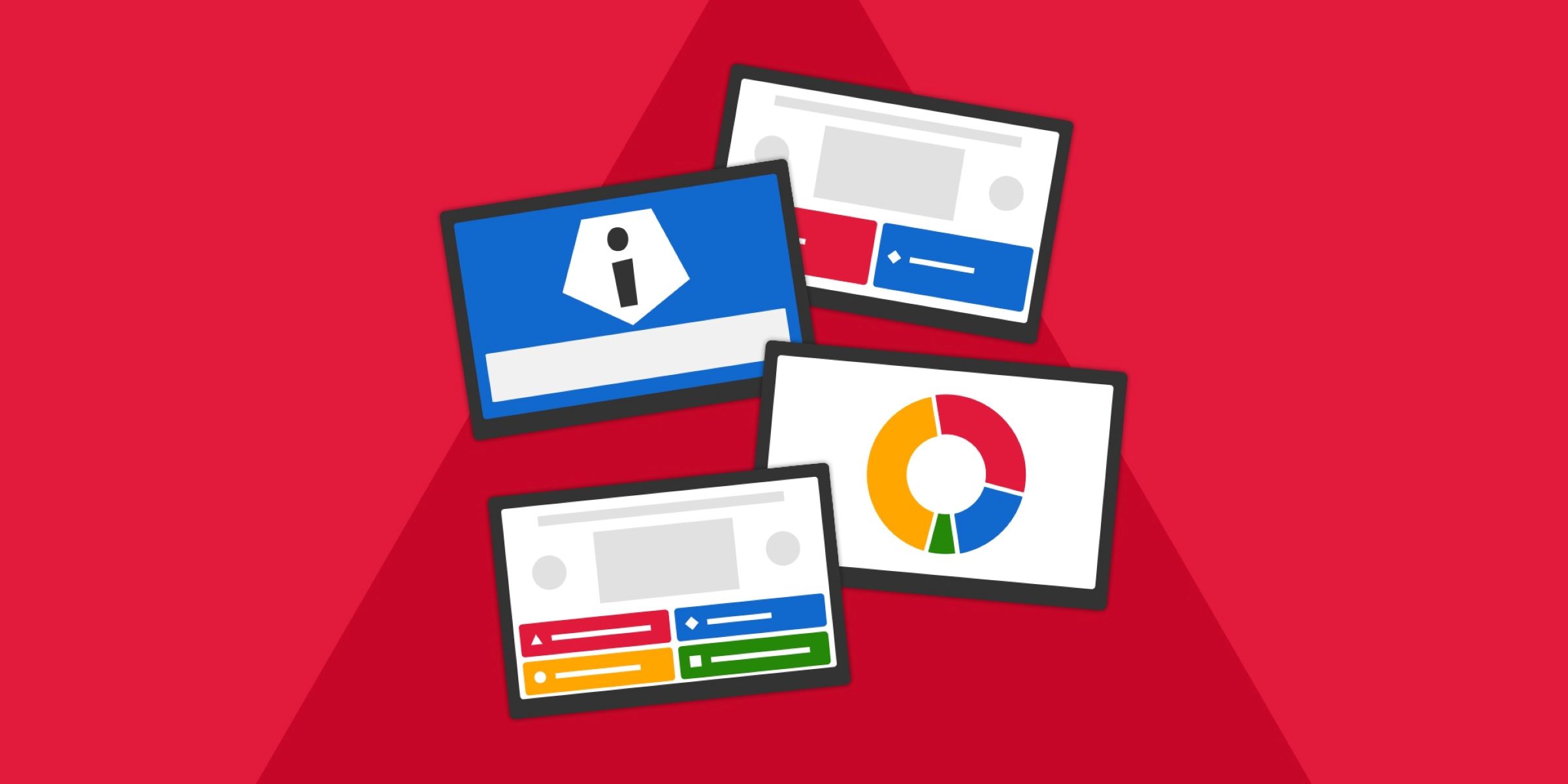Introduction
Welcome to the world of Kahoot, the exciting and interactive platform that has transformed the way students and educators engage in learning. Kahoot is a game-based learning tool that allows users to create and play quizzes, surveys, and discussions.
With its user-friendly interface and innovative features, Kahoot has become a popular tool in classrooms, corporate training sessions, and even social gatherings. One of the key features that sets Kahoot apart from traditional quizzes is its ability to show answers.
In this article, we will explore the importance of showing answers on Kahoot and provide a step-by-step guide on how to enable this feature. Whether you’re an educator looking to assess your students’ understanding or a host wanting to engage your participants, showing answers on Kahoot can enhance the learning experience and create a competitive and engaging atmosphere.
So, let’s dive in and discover how you can make the most of Kahoot by unlocking the power of showing answers!
What is Kahoot?
Kahoot is an innovative and interactive learning platform that has revolutionized the way individuals, from students to professionals, engage in education and training. It is designed to make learning fun and engaging by incorporating game-based elements into the learning experience.
At its core, Kahoot allows users to create and play interactive quizzes, polls, and discussions. Users can access Kahoot via a web browser or through the dedicated mobile app, making it accessible and versatile in various learning environments.
Through Kahoot, educators can create custom quizzes to test their students’ knowledge on different subjects. Participants can join a Kahoot game by entering a unique game PIN on their devices, be it a smartphone, tablet, or computer. The game is played in real-time, with questions and answer options displayed on a shared screen, such as a projector or interactive whiteboard.
Kahoot combines elements of competition and collaboration, allowing participants to compete against each other and see their scores on the leaderboard. This leaderboard feature adds a fun and competitive edge to the learning experience, motivating participants to strive for high scores.
Additionally, Kahoot offers a variety of question formats, including multiple-choice, true or false, and open-ended questions, allowing educators to assess different types of learning objectives. It also provides options for incorporating images and videos into the questions, making the learning experience even more engaging and interactive.
Furthermore, Kahoot offers a range of customization options, allowing educators to personalize the quizzes with relevant themes, colors, and images. This helps create a visually appealing and immersive learning environment that captures the attention and interest of participants.
Overall, Kahoot provides an innovative and interactive approach to learning, promoting engagement, collaboration, and fun. Its user-friendly interface and extensive features make it a valuable tool for educators and a captivating platform for learners of all ages and backgrounds.
Why should you show answers on Kahoot?
Showing answers on Kahoot can significantly enhance the learning experience and offer valuable insights for both educators and participants. Here are some reasons why you should consider enabling the “Show Answers” feature when using Kahoot:
1. Reinforce learning: By displaying the correct answers after each question, participants can reinforce their understanding of the topic. Seeing the correct answers allows them to identify any misconceptions they may have had and learn from their mistakes. It provides an opportunity for immediate feedback and encourages active learning.
2. Facilitate discussion and explanation: Once the answers are shown, educators can take the opportunity to discuss and explain the correct answers in more detail. This allows for deeper comprehension and enables participants to learn from the insights and explanations provided. It encourages a collaborative and interactive learning environment.
3. Motivate healthy competition: The leaderboard feature in Kahoot fosters healthy competition among participants. By showing the answers, learners can see how they performed compared to others, creating a sense of motivation and drive to improve. It encourages participants to engage and strive for higher scores, leading to a more dynamic and engaging learning experience.
4. Assess understanding and identify knowledge gaps: Showing answers on Kahoot allows educators to assess how well participants grasp the content. By analyzing the percentage of correct answers for each question, educators can identify common misconceptions, knowledge gaps, and areas where further instruction might be required. This insight enables educators to tailor their teaching strategies to address specific learning needs.
5. Promote critical thinking and problem-solving: Displaying the correct answers can serve as a starting point for critical thinking and problem-solving discussions. Participants can analyze the reasoning behind the correct answers, evaluate different approaches, and engage in meaningful discussions. It encourages participants to think deeper and develop their analytical skills.
Overall, showing answers on Kahoot adds an extra layer of engagement and interactivity to the learning experience. It provides participants with immediate feedback, encourages discussion, and helps educators assess understanding. By enabling this feature, you can transform your Kahoot game into a powerful educational tool that promotes deep learning and knowledge retention.
Step-by-step guide to showing answers on Kahoot
If you want to enhance the learning experience and provide immediate feedback to participants, here is a step-by-step guide on how to show answers on Kahoot:
1. Create your Kahoot game: Log in to your Kahoot account and click on the “Create” button to start creating your game. Choose a suitable title and select the appropriate question format for your quiz, such as multiple-choice or true/false.
2. Enable the “Show Answers” feature: In the question editor, you will find an option to enable the “Show Answers” feature. Toggle this feature on to display the correct answers to participants after each question.
3. Customize the answer reveal settings: Kahoot provides options to customize how the answers are revealed to participants. You can choose to show the answers immediately after each question or delay their reveal to create suspense. Consider the learning objectives and the dynamics of your group to determine the most suitable answer reveal setting.
4. Start the game and display the answers: Once you have finished creating your Kahoot game, you are ready to start the game. Share the game PIN with the participants, and make sure everyone has joined the game on their devices. As you progress through the questions, the participants will see their answers on their screens, and you can display the correct answers on the shared screen for everyone to see.
5. Discuss and provide explanations: After each question, take a moment to discuss the correct answer and provide explanations to help participants understand the reasoning behind it. Encourage participants to ask questions and engage in further discussions to deepen their understanding of the topic.
6. Repeat the process for each question: Continue the game by repeating steps 3 to 5 for each question in your Kahoot game. Showing answers and discussing them after each question creates a continuous learning cycle and encourages active participation from the participants.
By following this step-by-step guide, you can incorporate the “Show Answers” feature into your Kahoot game, enhancing the learning experience, promoting discussion, and providing immediate feedback to participants. Remember to consider the specific needs and dynamics of your group as you customize the answer reveal settings and facilitate discussions throughout the game.
Create your Kahoot game
Creating a Kahoot game is the first step to engaging your participants and incorporating the “Show Answers” feature. Here’s a step-by-step guide on how to create your Kahoot game:
1. Log in to your Kahoot account: Start by logging into your Kahoot account. If you don’t have one, you can sign up for free at kahoot.com.
2. Click on “Create”: Once you’re logged in, click on the “Create” button on the top right corner of the screen. This will open the Kahoot game editor.
3. Title your Kahoot game: Give your Kahoot game a descriptive and engaging title that reflects the theme or subject of your quiz. This will help attract participants and create excitement.
4. Select the appropriate question format: Choose the question format that best suits your quiz. Kahoot offers various options, including multiple-choice, true/false, and open-ended. Consider the learning objectives and the type of content you want to assess when selecting the question format.
5. Add questions and answer options: Start adding questions to your Kahoot game. Each question should have a clear and concise prompt, followed by a set of answer options. Be creative and make the questions engaging to keep the participants interested.
6. Set the correct answers: For each question, select the correct answer option. This is crucial for the “Show Answers” feature, as it determines which answers will be displayed to participants after each question.
7. Include images and videos (optional): Kahoot allows you to enhance your questions by adding images and videos. This can make your game more visually appealing and interactive, adding an extra element of engagement for participants.
8. Customize the game settings: Kahoot provides various customization options to make your game unique. You can customize the game’s appearance by selecting themes, colors, and backgrounds. You can also adjust the time limit for each question and enable or disable other features such as points, music, and audience participation options.
9. Save and preview your Kahoot game: Before finalizing your Kahoot game, make sure to save your progress and preview the game to ensure everything looks and functions as intended. This allows you to make any necessary adjustments before sharing it with participants.
10. Share the game PIN: Once you are satisfied with your Kahoot game, share the unique game PIN with your participants. They will need this PIN to access and join the game on their devices.
By following these steps, you can create a customized and engaging Kahoot game that aligns with your learning objectives. Remember to consider the content, format, and customization options available to create a fun and interactive learning experience for your participants.
Enable the “Show Answers” feature
Once you have created your Kahoot game, the next step is to enable the “Show Answers” feature. Enabling this feature allows participants to see the correct answers to each question after responding. Here’s how to enable the “Show Answers” feature:
1. Access the question editor: Open your Kahoot game and navigate to the question editor. This is where you can modify and customize the settings for each question.
2. Toggle on the “Show Answers” feature: Within the question editor, you will find an option to enable the “Show Answers” feature. It is usually displayed as a toggle switch next to the question or answer options. Simply click on the toggle switch to turn it on and activate the feature.
3. Customize the answer reveal settings: Kahoot also allows you to customize how the answers are revealed to participants. You can choose to show the correct answers immediately after each question or set a delay to create suspense. Consider the learning objectives and the dynamics of your group to determine the most suitable answer reveal setting.
4. Save your changes: Once you have enabled the “Show Answers” feature and customized the answer reveal settings, make sure to save your changes in the question editor. This ensures that the feature is activated and will be applied throughout the game.
5. Repeat for each question: Repeat this process for each question in your Kahoot game. Enabling the “Show Answers” feature individually for each question ensures that participants can see the correct answers after responding to every question.
By following these steps, you can enable the “Show Answers” feature in your Kahoot game and provide participants with immediate feedback. The “Show Answers” feature enhances the learning experience by allowing participants to reinforce their understanding, facilitating discussions, and promoting active engagement in the learning process.
Customize the answer reveal settings
Customizing the answer reveal settings in your Kahoot game allows you to control how the correct answers are displayed to participants. By personalizing the answer reveal settings, you can create a more dynamic and engaging experience. Here’s how to customize the answer reveal settings:
1. Choose the timing: Kahoot provides different options for when the correct answers are revealed. You can choose to show the answers immediately after each participant responds or set a delay to build suspense. Consider the complexity of the question and the desired level of engagement when deciding on the timing of the answer reveal.
2. Enable or disable explanations: In addition to showing the answers, Kahoot allows you to provide explanations for each question. This feature can be valuable in promoting understanding and learning. Decide whether you want to enable or disable the explanations for each question based on the learning objectives and the need for additional context or discussion.
3. Control the visibility duration: When showing the correct answer, you can also control how long it stays visible on the shared screen. This duration can be crucial for participants to take a quick glance or to discuss the answer before moving on to the next question.
4. Consider sound effects: Kahoot also offers optional sound effects that can accompany the answer reveal. Sound effects can add excitement and engagement to the game. Think about whether or not you want to include sound effects and select the most suitable ones for your Kahoot game.
5. Save your settings: Once you have customized the answer reveal settings to your liking, make sure to save your changes. This ensures that your preferred settings will be applied throughout the game and that participants will experience the desired answer reveal effects.
6. Test and preview: Before launching your Kahoot game for participants, it’s always a good idea to test and preview the answer reveal settings. This enables you to see how the answers will be presented and make any necessary adjustments to optimize the overall experience.
By customizing the answer reveal settings in your Kahoot game, you can create a more interactive and engaging learning environment. Through controlling the timing, using explanations, adjusting visibility duration, and considering sound effects, you can tailor the answer reveal experience to match your educational goals and the preferences of your participants.
Start the game and display the answers
Once you have created and customized your Kahoot game, it’s time to start the game and display the answers to the participants. Here’s a step-by-step guide on how to do it:
1. Share the game PIN: Provide the unique game PIN to the participants so they can join the game on their devices. Make sure everyone is ready and connected before proceeding.
2. Launch the game: Start the game by clicking on the “Play” button. This will initiate the Kahoot session and display the first question on the shared screen.
3. Participants respond: As the questions appear on the shared screen, the participants will answer on their own devices. Encourage them to answer each question to the best of their abilities within the given time limit.
4. Reveal the correct answers: After the participants have submitted their answers, you can reveal the correct answers by clicking on the “Show Answers” button. The correct answers will be displayed on the shared screen for everyone to see.
5. Discuss and provide explanations: Take the opportunity to discuss the correct answers and provide explanations to help participants understand the concepts. Emphasize the reasoning behind each correct answer, address any misconceptions, and encourage participants to ask questions or share their thoughts.
6. Proceed to the next question: Once the discussions and explanations are complete, move on to the next question by clicking the “Next” button. Repeat the process of participants responding, revealing the correct answers, and engaging in discussions for each subsequent question.
7. Monitor progress and leaderboard: Throughout the game, monitor the progress of participants and keep an eye on the leaderboard. The leaderboard displays the scores of participants, fostering competition and motivation. Participants can see how they rank compared to others, which can further drive engagement and participation.
8. Continue until the end: Continue playing the game, revealing answers, and facilitating discussions for each question until you reach the end of the game. Keep the energy and engagement levels high by maintaining a good pace and encouraging participation.
9. Conclude the game: Once all the questions have been answered, you can conclude the game by sharing final remarks and thanking the participants for their participation. You can provide a brief summary of the key concepts covered and address any outstanding questions.
By following these steps, you can start your Kahoot game, display the correct answers, and facilitate engaging discussions. The process of revealing answers and discussing them after each question helps ensure active participation, provides immediate feedback, and contributes to a more meaningful and interactive learning experience.
Additional tips and tricks for showing answers on Kahoot
While the “Show Answers” feature in Kahoot can enhance the learning experience, there are a few additional tips and tricks you can implement to make the most of this feature. Consider the following suggestions:
1. Use the timer effectively: When revealing the correct answers, keep a timer visible on the shared screen. This way, participants can see how much time is remaining to review the answers and engage in discussions before moving on to the next question.
2. Encourage peer-to-peer discussions: Instead of solely providing explanations yourself, encourage participants to engage in discussions with their peers. This promotes active learning and allows participants to learn from one another. Consider dividing participants into small groups or pairs during the answer reveal phase to promote collaboration and a deeper understanding of the material.
3. Incorporate multimedia elements: Take advantage of Kahoot’s multimedia capabilities by including relevant images, videos, or audio in your questions and answer options. This can make the answer reveal phase more engaging and visually stimulating for participants, enhancing their overall learning experience.
4. Provide additional resources: Alongside the answer reveal, consider sharing additional resources such as articles, videos, or websites related to the topic. This allows participants to explore the concepts in more depth, reinforcing their understanding and encouraging further exploration beyond the Kahoot game.
5. Use open-ended questions strategically: While multiple-choice questions are common in Kahoot games, consider integrating open-ended questions strategically. During the answer reveal phase, use these questions to initiate deeper discussions, allowing participants to provide their analysis and reasoning. This encourages critical thinking and the development of higher-level cognition skills.
6. Analyze and reflect on participant performance: After the game, take the time to analyze the participants’ performance and reflect on the results. Identify any areas where participants struggled or excelled, and consider revisiting those topics in future lessons or training sessions. This continuous improvement process can enhance the effectiveness of your Kahoot games.
7. Collect feedback from participants: Encourage participants to provide feedback on their experience with the “Show Answers” feature. This feedback can help you fine-tune your approach and make adjustments to future Kahoot games, ensuring a more optimal learning experience for participants.
By implementing these additional tips and tricks when showing answers on Kahoot, you can enhance engagement, foster discussions and collaboration, and create a more interactive and effective learning environment. Experiment with different techniques to find what works best for your audience and learning goals.
Conclusion
Incorporating the “Show Answers” feature in Kahoot can greatly enhance the learning experience for participants. By enabling this feature, you provide immediate feedback, reinforce understanding, stimulate discussions, and promote engagement. Customizing the answer reveal settings and using additional tips and tricks can further optimize the impact of this feature.
Kahoot, with its game-based learning approach, has revolutionized the way individuals learn and engage with educational content. By incorporating the “Show Answers” feature, educators and hosts can create a dynamic and interactive learning environment. Participants have the opportunity to reinforce their knowledge, discuss the correct answers, and develop critical thinking and problem-solving skills.
Remember to create a well-designed Kahoot game, enable the “Show Answers” feature, and customize the answer reveal settings. Encourage discussions, provide explanations, and use multimedia elements to keep the learning experience engaging and interactive.
Continuously evaluate participant performance and gather feedback to improve future Kahoot games and tailor them to the specific needs of your audience. By utilizing the power of the “Show Answers” feature effectively, you can maximize the benefits of Kahoot and create an enjoyable and effective learning experience for all participants.







